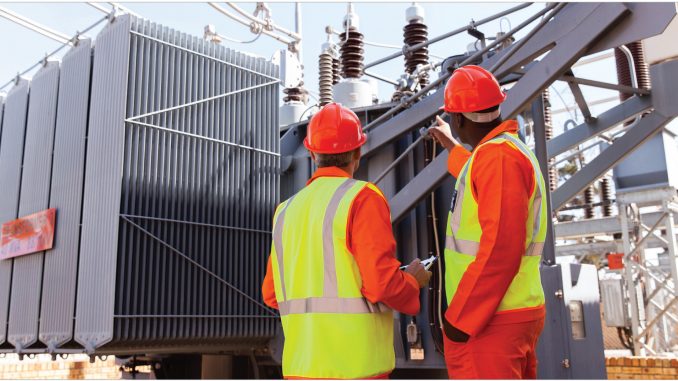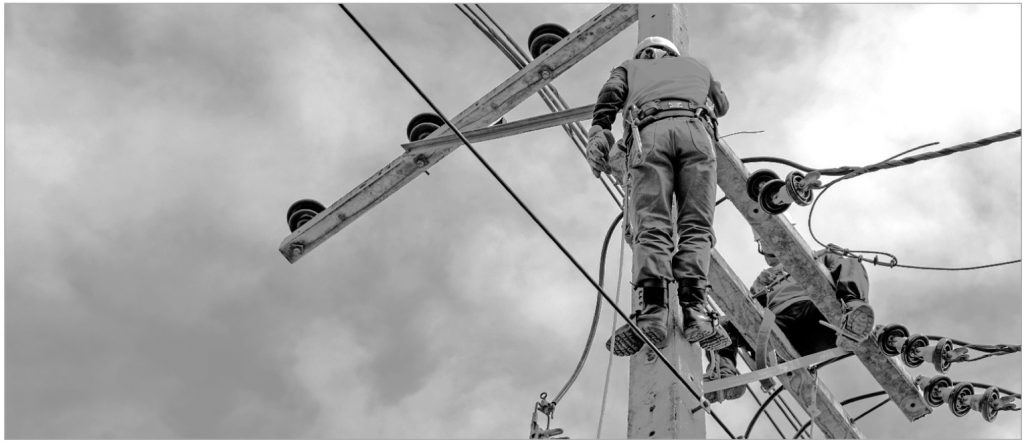
Rapid economic growth has increased the burden on India’s infrastructure, which is one of the weakest links in the country. An inadequate infrastructure can severely hold back a country’s growth story. Thus, over the past few years, the government has made concerted efforts to accelerate infrastructure development in India. Power is one of the critical components of infrastructure, crucial for the economic growth and welfare of the countries. India added 108 GW of new generation capacity over the past five years, which has led to power deficits declining from 12.2 per cent of peak demand in 2001-02 to 2.6 per cent in 2015-16. However, power distribution companies are at the crossroads of slowing demand due to various measures on the one hand and untapped demand potential (in the upcoming opportunities) on the other. With an agenda of long-term sustainability and carbon footprint reduction, the government is committed to lowering the demand, which is an impediment for the distribution companies.
The following factors have contributed to lower demand by utility consumers:
- Promotion of the green energy initiative: With the increasing focus on green energy especially solar power, a large number of consumers are opting for rooftop solar with net metering arrangements, wherein the excess power is fed into the grid. With falling solar power prices, more and more consumers are shifting to rooftop solar, thereby reducing their dependence on power supply from the distribution companies.
- Energy efficiency measures for different consumer segments: With the runaway success of the UJALA (Unnat Jyoti by Affordable LEDs for All) scheme, administered by Energy Efficiency Services Limited, under which households are provided LED bulbs, LED tube lights and energy efficient fans at affordable prices, household consumption is expected to come down considerably in the near future.
- Enhanced consumer participation in open access due to a fall in the short-term power market prices: With lower-than-anticipated growth on the demand side and higher availability on the supply side, distribution companies are saddled with surplus power, which is dragging down the cost of power in the short-term market. Bulk consumers are cashing in on this opportunity and availing of power from the short-term market through the open access mechanism. This situation is a double whammy for the distribution companies. On the one hand, they are losing their best-paying consumers, while on the other hand they are saddled with surplus power, thus further reducing the short-term market prices.
- Energy conservation: Many large industries are embracing the requirement of sustainability reporting and thereby initiating energy conservation measures. As a result of these initiatives, industries are utilising less electrical energy, thus contributing to low demand growth.
Given the disruptive factors on the demand side, power distribution companies would face a serious revenue loss in the near future if new initiatives are not taken for increasing the growth. To this end, the distribution segment can explore the following avenues for increasing demand through growth on the consumer side:
- Promotion of e-vehicle charging: With the government’s push for complete electric mobility by 2030, distribution companies have a unique opportunity at hand for increasing the demand manyfold. Electric vehicles (EVs) will require state-of-the-art charging stations and ecosystem development for leveraging the multiplier effect, along with a push from the government with suitable policy impetus. Looking at the growth of electric rickshaws on Indian roads, it can safely be assumed that India is on the right path for the adoption of e-mobility solutions. Distribution companies can undertake policy advocacy with the state regulator for setting up charging stations under the regulated framework (just like grid substations) to fast-track the development of the EV ecosystem. Tariff for the charging station can be finalised based on the cost of supply for charging and the regulated return on the cost associated with the charging station. Further, to encourage the consumers to visit the charging station during off-peak hours and to flatten the load curve of the discom, separate tariffs can be decided for different time zones. While on the one hand it will help reduce the country’s dependence on fuel import, on the other hand, if properly implemented, it will flatten the load curve for the distribution companies, thereby reducing the addition of new spinning reserves.
- Electrification of new areas: With every third citizen in the country having no access to electricity, the distribution companies are poised for huge growth on the demand side after the implementation of the electrification programmes. With encouraging stories of the Deendayal Upadhyaya Gram Jyoti Yojana and the newly launched Saubhagya scheme, we are highly hopeful that the government will meet its electrification target earlier than the anticipated target date. Further, with increased focus on the implementation schedule and accountability of deliverables, electrification of new areas is happening at a fast pace in most parts of the country.
- Promotion of smart kitchens: With the runaway success of the Pradhan Mantri Ujjwala Yojana, it is now time to look at alternative energy sources for meeting the needs of the Indian urban kitchen. If greater standards of performance are imposed on the distribution companies by the state regulators to ensure reliability and quality of power, Indian households can become ready for electric cooking. Further, with the recent government initiative of ONGC-funded electric stoves for rural kitchens, electric cooking is expected to become a mainstream cooking option in the near future.
- Smart homes – a reality in the future: With access to reliable and quality power supply, many households in urban areas will opt for smart homes and appliances that can be controlled by end consumers through their personal mobile. If distribution utilities are able to deliver quality and reliable power to cater to the needs of smart homes, consumers would buy new appliances as per their household requirements, thereby increasing the multiplier effect in electricity growth.
- Powering IoT: With the government’s promotion of the JAM (Jandhan-Aadhaar-Mobile) ecosystem and Digital India, business is slowly driving towards the internet of things (IoT). For powering a reliable communication network, reliable power supply is the basic necessity. In times to come, with the government’s vision of providing faster internet speed and adopting the 5G protocol, electricity demand for powering the communication highway will increase manyfold and distribution companies will hold the key for transforming this dream into a reality.
With a number of initiatives supported by the government, distribution companies are poised to achieve the next orbit of growth. However, proper planning and the associated roadmap will help them in achieving the goals in a time-bound manner.
 By Tarun Katiyar,
By Tarun Katiyar,
Head, Business Development,
Tata Power Delhi Distribution Limited

